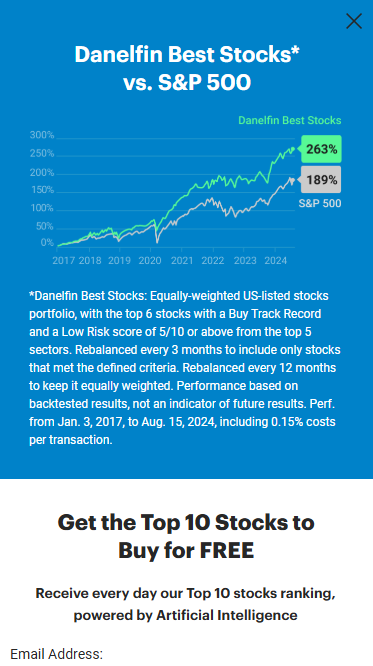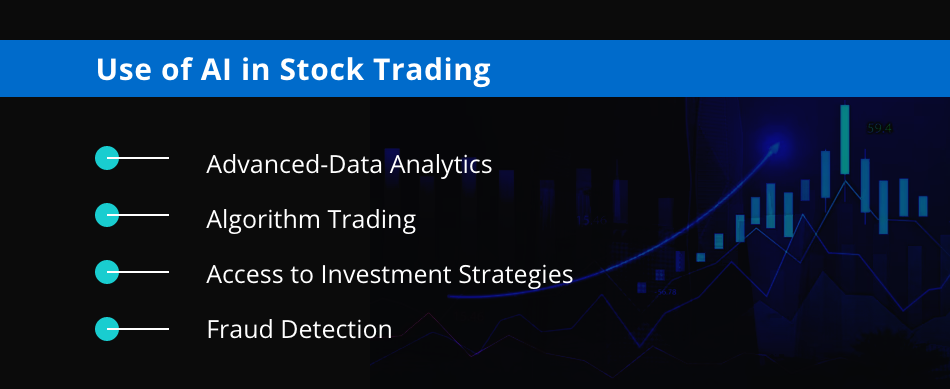20 Excellent Suggestions To Picking AI Stock Picker Platform Sites
20 Excellent Suggestions To Picking AI Stock Picker Platform Sites
Blog Article
Top 10 Things To Consider When Evaluating The Security And Privacy Of Ai-Powered Stock Predicting And Analyzing Trading Platforms
Since they are often handling sensitive financial data, or even personal data, security and confidentiality of data is essential. In the event of a breach, or misuse of data, it could result in significant financial losses and reputational damage. Here are the top 10 tips for evaluating the security and privacy on these platforms.
1. Consider Data Encryption
Secure transmission of data: Make sure the platform uses secure protocols (e.g., TLS/SSL) to protect data that is transmitted between your device and their servers.
Verify the encryption at rest. Check to see if sensitive data is encrypted on the platform's servers using strong encryption standards (e.g. AES-128).
End-to-end encrypted communications: Make sure that the platform you're using has encryption that works complete for sensitive data.
2. Assess the Authentication Measures
Two-factor authentication (also known as copyright) is a fantastic way to increase security.
Verify biometric authentication.
Password policy - Make sure that the platform enforces strong policies for passwords (e.g. length requirements or complexity requirements).
3. Check for Regulatory Compliance
Financial regulations: Make sure your platform is in compliance with applicable financial laws (e.g., SEC, FINRA, MiFID II).
Laws on data protection. Make sure you are in compliance with data privacy laws in your region (e.g. CCPA, GDPR) in the event that it applies.
Audit certifications - Examine to determine if the platform is certified or has had third party security audits (e.g. SOC 2, ISO 27001).
Review Controls for Access to Data
Access based on role: Use access controls based on role to restrict access to data to only authorized users.
Permission levels - Make sure that you have the ability to give different permissions to members or members.
Activity monitoring. Make sure that the platform monitors suspicious user activity and records it.
5. Examine Vulnerability Management
Regular updates Make sure to update the software frequently to ensure it's always up-to-date.
Penetration Testing: Verify whether the platform is regularly tested for penetration that identifies and corrects security weaknesses.
Programs for bug bounty: Find out if the platform has a bug bounty program to incentivize external security researchers to identify security holes.
6. Evaluate Data Privacy Policies
Transparency. Read the platform's Privacy Policy to understand the types of information being collected and how it is used.
Data minimization: Make sure the platform collects only information that is necessary for its operation.
Third-party sharing : Verify the policies of the platform for sharing data and terms.
7. Secure API use is essential to check
API security: Make sure the API of the platform API has secure authentication methods (e.g., OAuth, API keys) and also encrypts data exchanges.
Rate-limiting: Determine if the API has a limit on rate to prevent abuse and brute-force attacks.
Check whether the platform records API access to monitor, auditing and reporting.
8. Assess Incident Response, Recovery
Plans for incident response: Make sure that the platform you are using has an clearly-defined incident response plans. This plan should cover the handling of data and security breaches.
Review the platform's policies for notification.
Backups of data: Make sure the platform regularly backups its data, and also has a disaster recovery plan.
9. Evaluate Physical Security Measures
Data center security Security of servers: Ensure that the servers of your platform are in data centers that are equipped with physical security measures, including surveillance and access controls.
Redundancy: Check if the platform has redundant systems in order to guarantee that data is available in the event of hardware failure.
Geographic distribution: Determine if data is spread across several geographic locations for added protection.
10. Privacy controls for users to test
Data deletion: Ensure that the platform permits you to erase your personal data for good if you decide to stop using the service.
Privacy settings: Make sure to check whether the platform offers privacy settings that control what data is public or shared.
Anonymization: Check whether the platform is able to anonymize the data that is used to analyze or machine learning.
Bonus Tips
Reputation and reviews from users: Research reviews and feedback from customers to assess the platform's of security and privacy.
Trial period: Test the security and privacy features of the platform by downloading no cost demo.
Customer support: Ensure the platform provides a solid support for security-related issues or concerns.
Follow these tips to evaluate the privacy and security level of AI platforms for stock prediction and analysis. So your financial and personal details are protected. Secure platforms protect your assets and builds trust in its services. See the top rated https://www.inciteai.com/trader for blog recommendations including investing ai, ai investing app, investing ai, ai stock picker, ai for stock trading, ai for stock predictions, ai trading tools, ai stocks, stock ai, using ai to trade stocks and more.
Top 10 Tips For Assessing Regulatory Compliance Using Ai For Stock Predicting/Analyzing Trading Platforms
The regulatory compliance aspect plays an important part in the evaluation of AI platforms for stock prediction and analysis. Compliance ensures a platform's operation within the legal frameworks. The data of the users is secure and financial regulations are complied with, which reduces any risk of legal issues. These are the top 10 suggestions for assessing compliance with regulatory requirements.
1. Verify the Licensing & Registration
Regulatory Authorities: Ensure that the platform registered with the relevant regulatory authorities (e.g. SEC US, FCA UK and ASIC Australia) and has a license.
Verify partnerships with brokers. If the platform incorporates brokers, ensure that they're licensed and monitored.
Public records: Visit the official website of the regulator for the status of registration for the platform and any past violations.
2. Compliance with Data Privacy Evaluation
GDPR If you're serving or operating within the EU, make sure that your platform is in compliance to the General Data Protection Regulation.
CCPA for Californians be sure to check the compliance of California Consumer Privacy Act.
Policy on handling data: Make sure you read the privacy policies to learn how users' data is stored and collected.
3. Evaluation of Anti-Money Laundering Measures
AML policies - Make sure that your platform's AML policies are strong and efficient to detect, prevent and detect money laundering.
KYC procedures. See if your platform follows Know Your Customer processes for authenticating user identities.
Monitor transactions: Determine whether the platform monitors transactions for suspicious activity and if it reports it to the appropriate authorities.
4. Check for your compliance with Trading Regulations
Market manipulation: Make sure the platform has measures to protect against market manipulation like spoofing or wash trading.
Order types: Check if the platform is in compliance with the regulations applicable to different types of orders (e.g. there is no stop-loss hunt).
Best execution: Check to see if the website is adhering to the best execution method, which ensures that trades will be executed at the lowest price.
5. Cybersecurity Compliance:
Data encryption - Ensure that the platform uses encryption to safeguard data in transit or at rest.
Response to incidents: Verify that the platform has an incident response plan in place for cyber-attacks or data breaches.
Certifications: Make sure the platform has cybersecurity certifications (e.g., ISO 27001, SOC 2).
6. Transparency and Disclosure
Fee disclosure: Ensure the platform is clear about the total amount of fees, which includes extra or hidden charges.
Risk disclosure: Check if the platform provides clear risk disclosures, especially for high-risk or leveraged trading strategies.
Performance reporting: Ensure the platform provides transparent and exact performance information for its AI model.
7. Verify that you are in compliance with International Regulations
Trading across borders. If you plan to trade internationally, check that your platform adheres to the regulations in force.
Tax reporting: Determine whether there are tax reporting tools or reports available to assist you with the tax regulations.
Compliance with sanctions: Verify that the platform is in compliance with sanctions and does NOT allow dealings or transactions with banned entities or countries.
8. Assess Record-Keeping, Audit Trails
Transaction records: For regulatory and auditing reasons, ensure that the platform maintains full logs of each transaction.
Logs of activity for users (logs) You can check to check if the platform records user activity such as logins and trades. Also, make sure that account settings are modified.
Check for audit readiness: Determine whether your platform is able to provide the required logs and documentation in the event of a regulatory inspection.
9. Examine Compliance with AI-specific Regulations
Algorithmic trading rules: If you are using a platform which supports algorithmic trading, make sure it is compatible with relevant regulatory frameworks such as MiFID II or Reg SCI which are in Europe as well as the U.S.
Bias and fairness: Verify if the platform monitors and corrects biases within its AI models to ensure fair and ethical trading.
Explainability - Ensure that the platform is able to give clear and concise explanations regarding AI-driven predictions, decision-making, etc. in accordance with certain rules.
Examine the User's Feedback and Regulatory Histories
User reviews: Check out user feedback and then compare it with the platform's regulatory standards.
Check the regulatory history to determine if there have been penalties or fines for violations of regulations.
Third-party auditors: Find out if the platform is regularly audited by a third party to ensure it's adhering to rules and regulations.
Bonus Tips
Legal consultations: You might need to speak with a lawyer in order to determine if the platform is in compliance with applicable regulations.
Trial period: Try the platform free of charge or try the demo to test out its compliance features and the documentation.
Support for customers: Ensure that the platform provides support to answer questions or concerns with respect to compliance.
With these guidelines using these tips, you will be able to identify the level of compliance with the law among AI stock trading platforms. This will allow you to choose a platform that is operating within the legal framework that protects your interest. Compliance not only lowers legal risks but also builds trust and confidence in the platform's services. Follow the recommended can ai predict stock market info for blog advice including ai options, trading ai tool, ai investment tools, ai in stock market, free ai stock picker, best ai stock prediction, best stock prediction website, ai stock price prediction, best ai penny stocks, best ai trading platform and more.